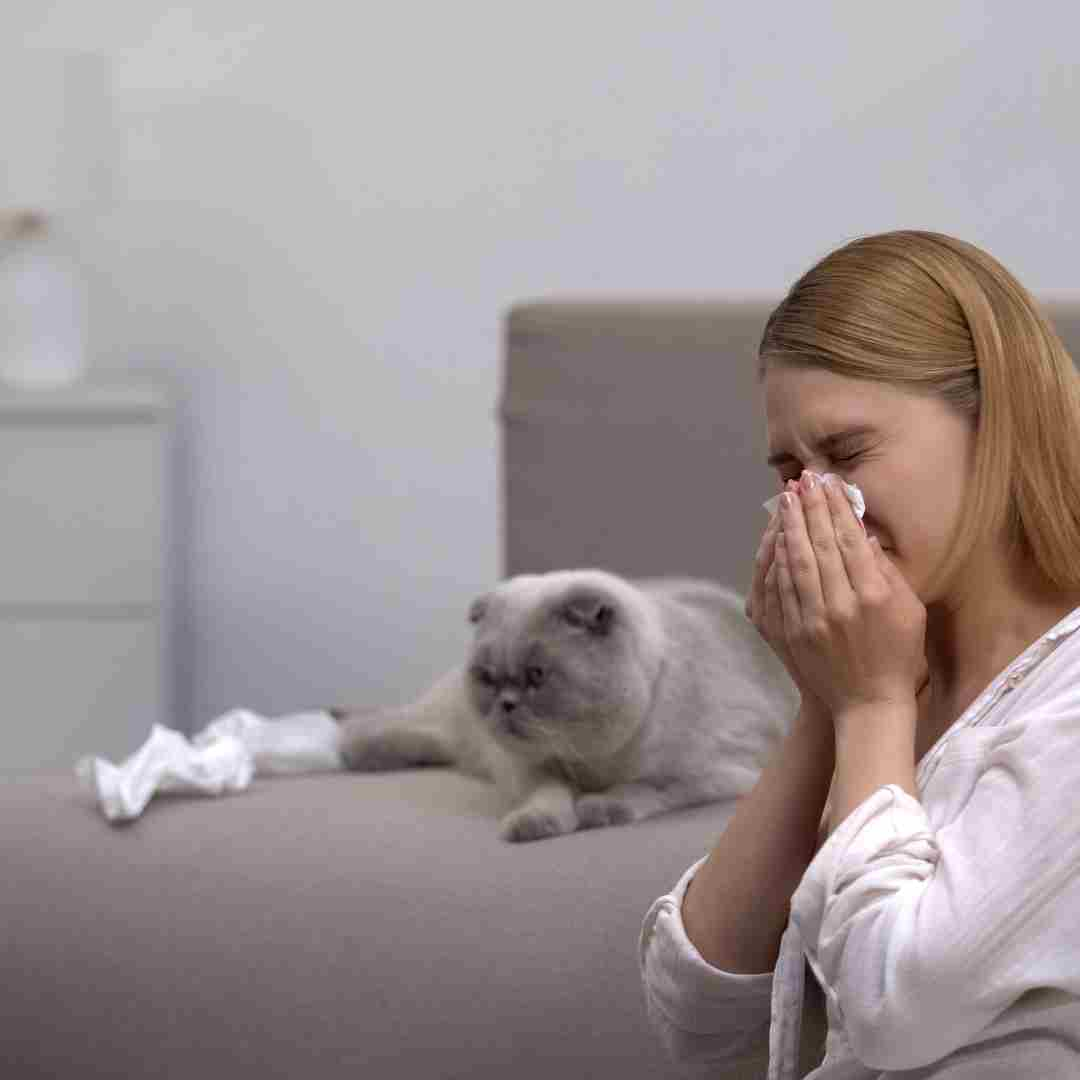Comparing Rabbit and Cat Allergies
Cat and rabbit allergies are widespread and induce comparable symptoms. However, the two have some major differences that should be considered when choosing an allergy treatment.
Sneezing, coughing, and itchy, watery eyes are the most frequent cat or rabbit allergy symptoms. Sometimes people have a runny nose, wheezing, and trouble breathing. Severe cases can cause life-threatening anaphylaxis.
The allergen that produces the reaction distinguishes cat and rabbit allergies. Cat saliva, urine, and dander contain a protein that causes allergies. Rabbit allergies are caused by a protein in rabbit fur and dander.
The easiest method to treat a cat or rabbit allergy is to avoid them. If this is not possible, reduce allergen exposure. Clean hands after touching the animal, use air purifiers and hoover regularly.
Allergic symptoms may be treated with medicine. Antihistamines, decongestants, and corticosteroids are examples. In severe cases, immunotherapy may be advised. This includes slowly injecting little amounts of the allergen to establish tolerance.
Cat and rabbit allergies can create similar symptoms, but the allergens are distinct. An allergy should be managed by avoiding contact with the animal, but if this is not possible, decrease allergen exposure. Medication or immunotherapy may help manage symptoms.
Signs of Rabbit Allergy
various people have rabbit allergies, which can cause various painful symptoms. Identifying these symptoms is the first step to managing the allergy and preventing reactions.
The most frequent rabbit allergy symptom is an itchy rash. This rash can arise anywhere, but the face, neck, and arms are more likely. The rash may include redness, swelling, and hives. Possible symptoms include sneezing, coughing, wheezing, and difficulty breathing.
Anaphylaxis, a life-threatening allergic reaction, can occur. Symptoms of anaphylaxis include throat swelling, trouble breathing, and low blood pressure. These symptoms require emergency medical intervention.
Rabbit allergies can cause watery eyes, runny noses, and itchy eyes. If you have these symptoms, avoid rabbits and get medical care.
Consult your doctor if you suspect a rabbit allergy. Doctors can diagnose and treat allergies. This may include avoiding rabbits, taking drugs, or getting allergy injections.
Reasons for Rabbit Allergies
Many people have rabbit allergies, and understanding their causes can help them manage their symptoms and lower their risk of an allergic reaction.
The animal's saliva, urine, and dander proteins induce rabbit allergies. Inhaled allergens from handling or grooming the animal can produce an allergic reaction. Light rabbit dander can stay airborne for long durations, making it a concern.
Rabbit fur can contain allergens in addition to saliva, urine, and dander proteins. Contact with the animal's fur or fur-contaminated things can spread these allergens to people.
Finally, animal dietary proteins may cause allergies. Contact with animal food or food-contaminated objects can convey these proteins to humans.
Not everyone exposed to these allergens will have an allergic reaction. These proteins can cause sneezing, coughing, wheezing, and itchy eyes in sensitive people. In severe cases, anaphylaxis may ensue.
Understanding rabbit allergy reasons helps sufferers lower their chance of an allergic reaction. Avoiding contact with the animal, wearing a mask when handling it, and washing hands after touching it or its food are examples. Those with serious allergies may need to avoid the animal altogether.
Rabbit Allergy Management Tips
The first step in treating rabbit allergies is identifying the allergen. Allergens include rabbit fur, dander, saliva, and urine. Avoid these substances if you're allergic to rabbits.
2. Protective Gear: When handling rabbits, wear gloves, a mask, and eyewear. This reduces allergen exposure.
3. Clean Regularly: Rabbit allergies require regular cleaning of the rabbit's environment. Regularly hoover and wipe surfaces with a moist cloth.
4. Use Air Purifiers: Air purifiers minimise allergies. Find air purifiers that eliminate pet dander and other allergens.
5. Avoid Contact: If allergic, avoid rabbits. After handling a rabbit, wash your hands.
6. Seek Medical Help: Severe allergies require medical attention. Your doctor may prescribe drugs to treat your symptoms.
Treatment of Rabbit Allergies with Immunotherapy
Immunotherapy treats many allergies, including rabbit allergies. This therapy gradually introduces little amounts of the allergen into the body to establish tolerance and reduce allergic reactions.
Immunotherapy is usually given as subcutaneous or sublingual. SCIT injects small amounts of allergen into the skin, whereas SLIT administers it under the tongue in liquid form. Although SCIT is more effective, both immunotherapies can treat rabbit allergies.
Individuals determine how well immunotherapy treats rabbit allergies. Symptoms may resolve completely or decrease in severity for some persons. Immunotherapy response times vary by person. Regular immunotherapy takes months to show results.
Rabbit allergies can be treated safely and effectively with immunotherapy. Immunotherapy may produce injection site irritation, redness, and edoema. The allergen may also cause a mild to severe allergic reaction. Before starting immunotherapy, discuss risks and side effects with your doctor.
Overall, immunotherapy works for rabbit allergies. It can lessen symptoms and perhaps cure the allergy. Before starting immunotherapy, discuss risks and side effects with your doctor.